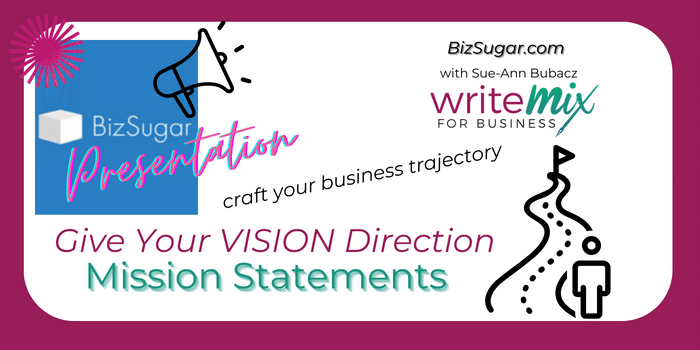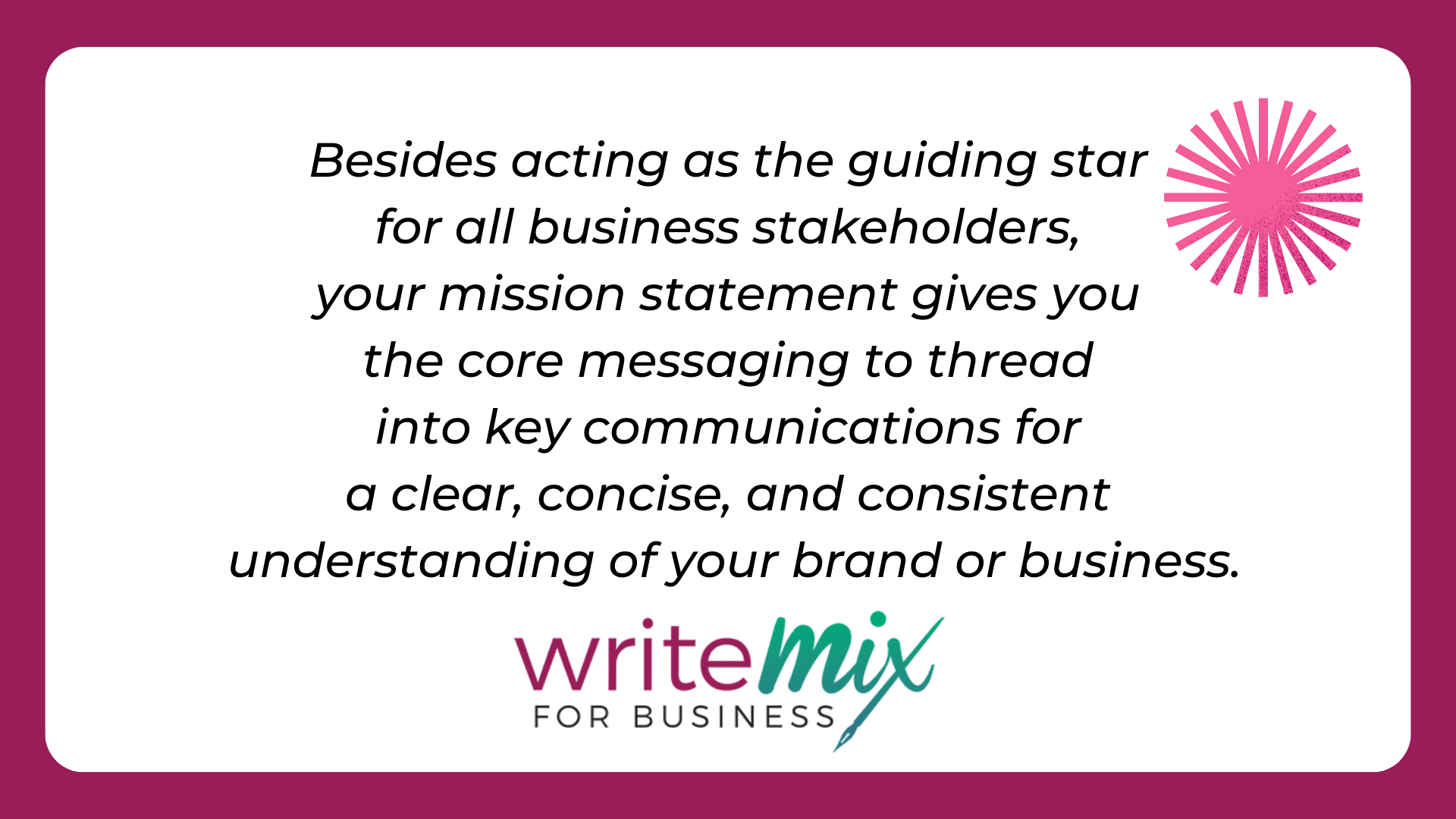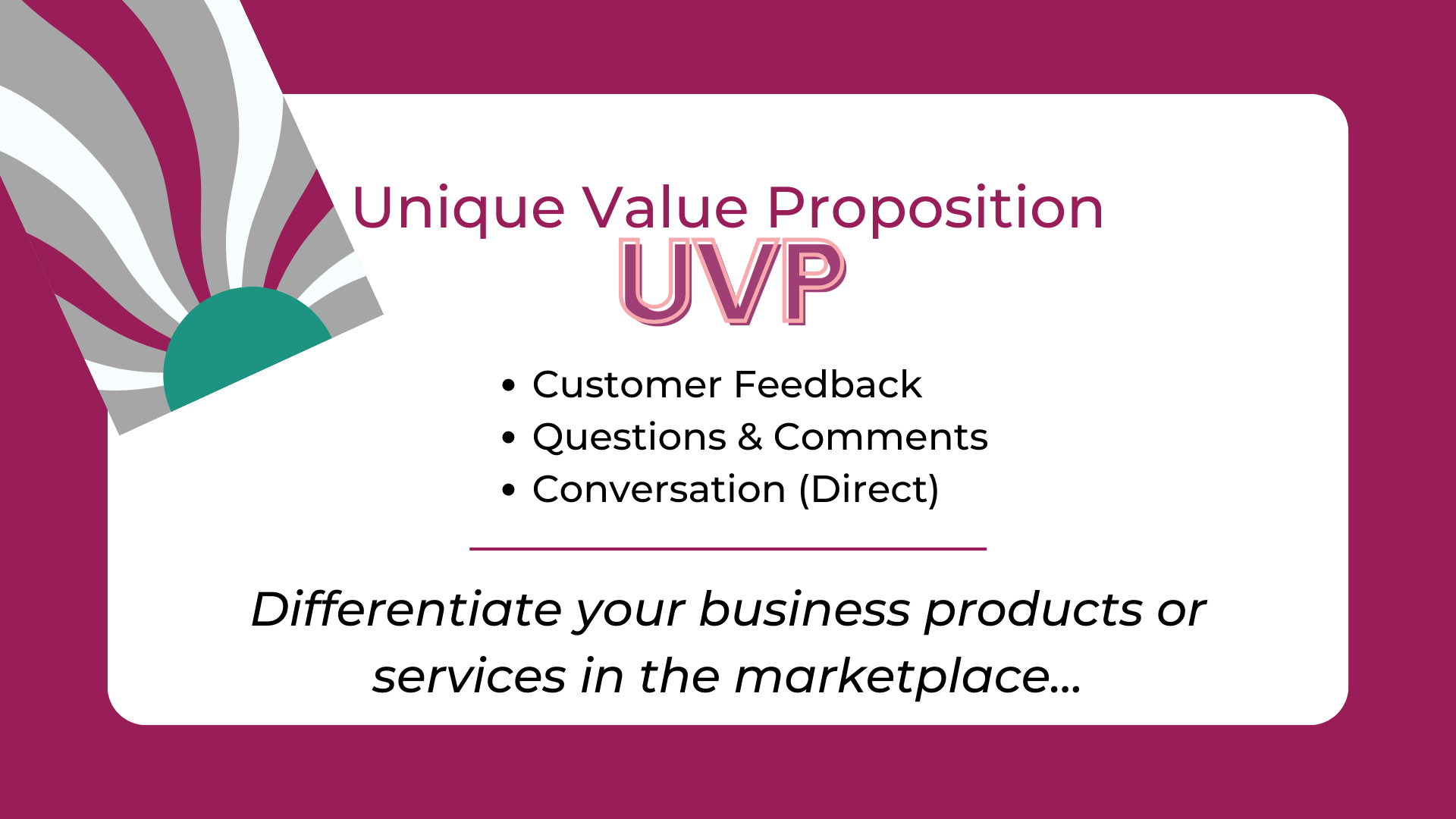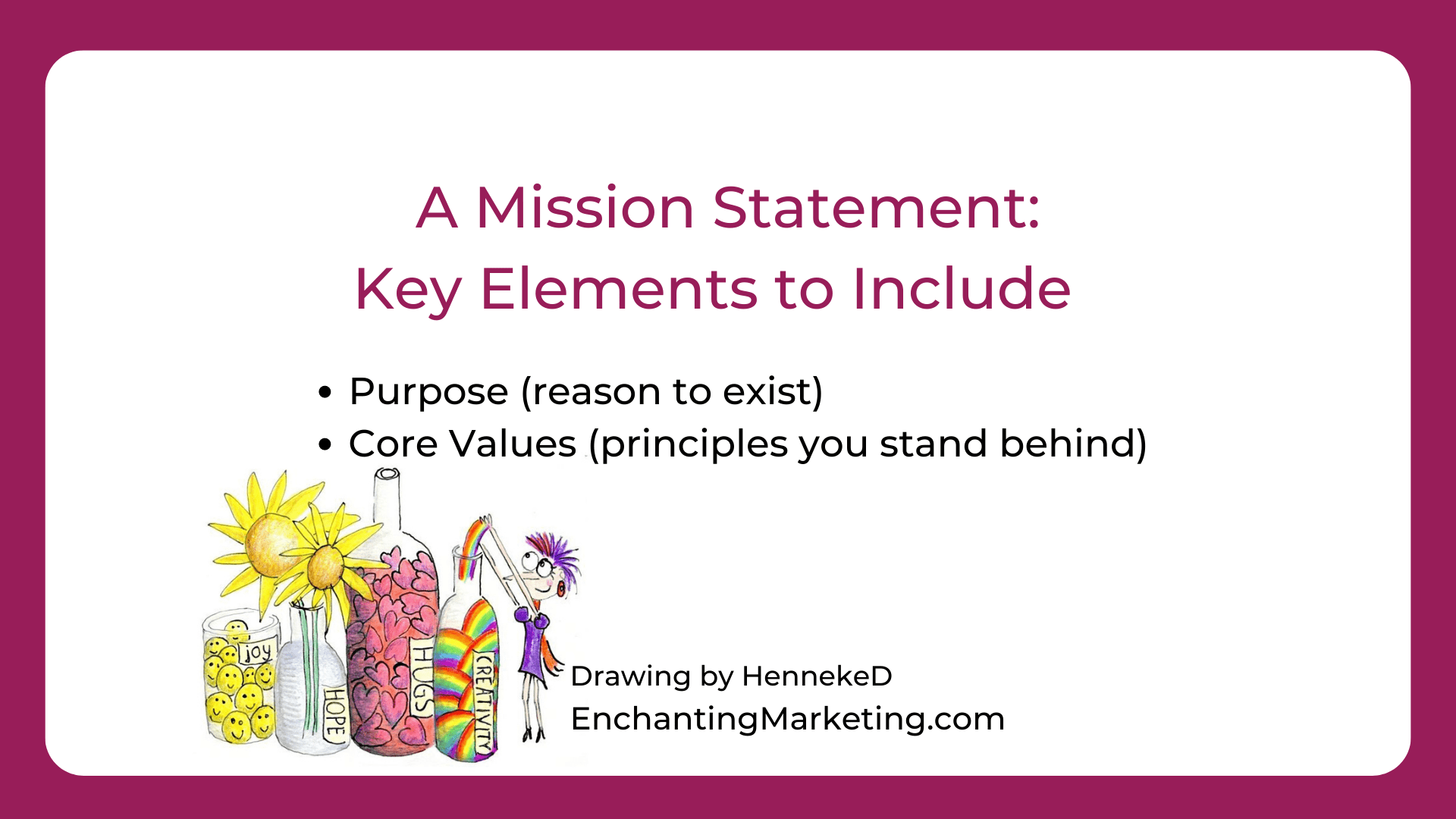
Writing your business Mission Statement— a Mission Statement that matters— feels like a big hairy audacious ordeal. But it doesn’t have to be that way.
I can’t wait to break it down for you so you can delight in it rather than run in fright.
Your Mission Statement, after all, gives your Vision— that big dream and meaningful reason you exist as a business for the solutions you bring— a clear, concise, and consistent direction so you can ultimately meet and exceed those monster goals for your business / brand.
You see, dreaming up a business and succeeding at it are two different things. And that’s exactly why your Mission Statement is critical and foundational for every business, regardless of industry or size.
Sometimes, a less complex Statement of Purpose will do the trick for some small businesses, freelancers, or solo entrepreneurs.
But what matters most, in either case, is that your statement provides a guiding star giving everyone, internally and externally, a clear understanding of who you are as a business and what you’re trying to accomplish.
When everyone is on board with business goals and objectives, you are more likely to accomplish them. Even your suppliers and service providers can help you more when they are clearer about what you’re up to!
Also— I’m just going to say it— if you aren’t crystal clear with your business mission, how will you possibly communicate who you are, what you do, why, and how to the world? How will you be successful if you, your team, and your customers aren’t all on the same page?
I hope you’re feeling how necessary, crucial, and valuable a Mission Statement is for providing a framework for business success.
What’s a Mission Statement?
So now that you feel the relevance, you still have to tackle how to create resonance for all stakeholders with what you put together.
After working on answers for multiple TipTalk chats and then producing a webinar for BizSugar on Mission Statements over the last couple of weeks, here is the definition I came up with to help you gain clarity to craft a winning Mission Statement for your business.
A well-written mission statement defines a clear and concise business purpose, gives strategic direction, and guides the execution of specific plans to achieve company objectives.
Your mission statement delivers a compelling and meaningful common understanding of your business or brand.
Besides acting as the guiding star for all business stakeholders, your mission statement gives you the core messaging to thread into key communications for a clear, concise, and consistent understanding of your brand or business.
Further, I put together a list of the key elements to help you define what to focus on to develop a unique and valuable asset (to build up and on) for your business by creating your statement.

PURPOSE
Your purpose is a higher calling than, say, making money. It’s typically more intrinsic and explains a bigger purpose, usually to do with the solutions you offer and problems you crush for customers.
Analyzing why you are in business, starting with a “we help people to” approach, is one way to focus on your “why” or main purpose.
CORE VALUES
Establishing your core values helps people understand the principles you operate by and stand behind in conducting business. It helps set up your company culture and brand identity and gives guidelines for business operations.
Identifying both a clear purpose and set company values helps align expectations within your organization.
TARGET MARKET
Getting to know, understand, and connect with your core audience, including customers, community, and the potential market, is paramount.
The easiest way to do this is simply to TALK to your clients, and they will TELL YOU what resonates most with them in working with you or using your product(s).
Developing Buyer Personas for the different types of customers you serve helps clarify core messaging, making it easier to connect genuinely with your target market.
Get to know who your customers are, inside and out, to interact more authentically and genuinely with them. Remember, you’re not marketing to them; you’re marketing with them in today’s digital environment.
SCOPE OF BUSINESS
Part of providing your business with direction means reverse engineering to determine the steps to achieve the results you desire. Your operations plan puts everything into motion for how to reach, complete, and expand on your business goals and objectives.
Without this imperative execution plan, it’s hard to propel your business higher or even move it forward. Take a close look at resources and allocation to accomplish streamlined results and gain traction faster.
UNIQUE VALUE PROPOSITION
Finding out what makes you unique in the marketplace lets you figure out how to position your business/brand/products/services, so you stand out. What makes you different, special, or better than anyone else? Why do your clients love you?
This UVP (Unique Value Proposition) thing is huge, HUGE. For now, here are two things to consider in refining your UVP:
1- Don’t just guess at this, but instead, take time to evaluate and validate your thinking.
2- Get out of your head and what you know (or think you know) and slip into the customer’s shoes because seeing your business from the outside-in isn’t easy, but it’s the point of view you need to embrace, understand, and leverage.
ASPIRATIONS/OBJECTIVES/GOALS
Your Mission Statement, although ever evolving, reflects a long-term outlook. By conducting thorough market research, SWOT analysis, and other relevant due diligence in putting yours together, a higher-level foundation and a framework for business will emerge. Your overarching reasons reveal themselves— aspirations and purpose are then apparent, meaningful, and useful over time.
Remember, your Mission Statement gives your Vision a clear direction and sets the trajectory for your business.
Make sure your business Mission Statement is a team sport, meaning every member has a part in moving forward in a cohesive direction. via @SueAnnBubaczClick To TweetEstablishing Core Communications
Establishing core communications from the foundational structure of your Mission Statement is essential and beneficial. This communications / story guides all business messaging.
And you’ll want to throw it around like colorful confetti across all business communications and marketing. To get it right, hone in on clarity, consistency, and conciseness to make it sticky and known.
As a cautionary note, instead of using meaningless words like “excellence” or “innovative,” try getting more specific, which sometimes requires simplifying word choice for a more direct, less pretentious approach.
Genuinely connecting with people in a meaningful way is the goal for communicating who you are. This is an example from a fellow BizSugar Mastermind member, Brian Hughes that I just love. It’s perfect, Brian!
“Our mission at Integrity Marketing and Consulting is to help businesses achieve their digital marketing objectives through tailored and effective solutions that drive measurable results. We believe in building long-term relationships with our clients based on transparency, communication, honesty, integrity, and excellence.” ~ Brian Hughes, Integrity Marketing and Consulting

Putting Your Mission Statement to Work
Putting your Mission Statement to work is easier than you think. As an example, here’s a business using its Values Statement as part of its website on its About Page!
Further, note the reason I saw it at all is that they were also using their company mission and vision in an email celebrating 7 years in business and sharing seven things they learned.
The email link then took me to the About Page, showing the company timeline as a visual along with Company Values listed. I also grabbed their core communications/messaging on the same page as follows:
“We hope SocialBee will empower you to use Social Media at its maximum potential and that it will enable you to grow your business online – faster and easier. Keep buzzing!” ~ socialbee.com
Sharing your business story makes communications and marketing more emotionally attractive and draws people’s attention to you in a memorable way.
But remember, the larger business objectives and expectations you are setting in motion by getting focused on your business and putting in the work to think through, research, and write a strong Mission Statement.
Using Your Back Story to Drive Forward
HubSpot shares its MVV Statement calling it HubSpot Culture Code, along with a detailed brand story in a widely shared PDF Presentation.
The presentation reveals the historical business background story, spinning it into a forward-reaching and rising statement of mission. They aren’t afraid to invite you along and into the bigger purpose that drives the company.
I love so many touches, but the “now and then” chart is succinct and simplified for a quick visual explanation of how they view company culture and the “workplace.”
They immediately draw you in further with relatable phrases addressing the current business environment, so you nod your head and continue scrolling.
Then they hit you with the people – the real people, the faces – of the HubSpot team. And we’re just getting started… go check it out…
I don’t know about you, but when I think HubSpot, I think inbound marketing. So it seems I got the message pretty darn clearly even before seeing the PDF.
This means they are successfully communicating the essence of their brand via the array of digital content I see or come across.
Still, you can say HubSpot producing a comprehensive and high-quality asset to explain its higher purpose makes it even more impactful.
By sharing and generously amplifying and distributing it, HubSpot’s Culture Code takes on double duty as a core business communication piece as well as a powerful inbound content asset.
Did I mention “Evergreen” for this key document as well? Bamm!
Sharing your business story makes communications and marketing more emotionally attractive and draws people’s attention to you in a memorable way. via @SueAnnBubaczClick To Tweet
Evergreen, Ever-Evolving, Everlasting
Your mission statement helps drive consensus for a business’s direction and informs how it evolves and adapts over time, keeping with a core business sentiment in a shared and relevant way, offering aspirational direction and growth in a company.
Additionally, a mission statement plays a significant role in building a strong brand identity for a business, contributing to the process in several ways. It guides such areas as the following in helping to define your brand identity:
- Establishing business purpose and values
- Assessing brand tone and personality via determination of UVP, positioning, and more
- Defining core competencies to highlight and showcase to enhance UVP and brand story
- Developing emotional connections to the community to induce buy-in and advocacy through meaningful company goals and objectives
- Communicating clear, concise, and consistent core communications and messaging to drive brand culture, increase awareness, and influence the tone of operations
In tandem, these factors embedded into a well-crafted Mission Statement help to comprehensively capture the essence of a strong and distinct brand that resonates with stakeholders and customers.
Here are a few resources:
- The 17 Best Mission Statement Examples (+Templates to Write Yours) (wordstream.com)
- Mission Statements: 15 Must-See Examples and How to Craft Your Own (boardeffect.com)
- 32 Mission and Vision Statement Examples That Will Inspire Your Buyers (hubspot.com)
- What Makes a Great Mission Statement (alessiobresciani.com)
- Anatomy of a Mission Statement – Plus 5 Quality Examples (nectarhr.com)
In the study and development of your mission statement, your research will include Competitive Analysis (SWOT) and Target Market Analysis.
Use these tools to distinguish areas where you excel among your competitors or where there is an unserved gap in the marketplace for a technique to differentiate your business, products, or services.

Creating a Memorable Brand with a Mission Statement that Matters
Identifying areas or processes you do differently or better than your competitors is a good place to start. Mine customer comments, questions, and feedback to find your most unique, most loved, or strongest features to highlight.
“A clear and inspiring mission statement packs multiple punches – it keeps your team focused on the goal; it tells and confirms to your customer why they should choose you. Depending on how well you embody your mission statement – customers will often stay loyal BECAUSE OF YOUR Mission statement.” ~Ivana Taylor, DIYMarketers
Be careful not to derail yourself from the bigger mission and vision framework because a mission statement matters. And, often, it remains foundational, a place to build up and on…
A Mission Statement Matters if You Craft it Thoughtfully
You see, mission statements reflect a bigger-picture outlook and aren’t meant to be a short-term view of your business. Therefore, upgrading your mission statement may entail tweaks over time more than a complete overhaul.
Of course, this varies by business or industry, both in terms of frequency and the size of any changes. In some cases, things like mergers, acquisitions, or rebranding will trigger the need for an upgrade or revamp.
But, even for fast-evolving tech companies, this fireball core of your main reason to exist often remains evergreen.
This is a good time to remind you to take time to craft, first, your vision in a meaningful way. And remember to think of your mission, vision, and values as foundational to business operations as well as the core of your marketing and communications.
Remember, a mission statement matters! Seriously, getting this statement right is the key to effective business. So taking extra time to nail it pays off in the long run.
Still, revisit and refine continually. I promise it is easy enough because this is always right in front of you, your business’s guiding star.
Ready to craft your own mission statement? Do the BizSugar Mission Statement Challenge.

good imformation
Mission statements help the business to understand what they’re putting in work for. This is a good article.